|
TennisOne Lessons Secrets to a Killer Kick Serve David W. Smith, Senior Editor TennisOne For many tennis players, seeking and executing a kick serve is often like finding the Holy Grail of tennis. Recreational and club players not only have a difficult time returning a good kick serve, they often can be made to look and feel a little foolish as they try to negotiate the different bounce of this serve — a clear psychological advantage for the server! Perhaps this explains why it is one of the most requested shots to be learned at lessons. Defining the Kick Serve Before I get into the secrets behind hitting a kick serve, we should take a moment to define what a kick serve is. Unfortunately, the kick serve has often been confused with “twist” or “topspin” serves. The term twist serve was originally the term used to describe what we commonly call a kick serve, however the old “American Twist” serve had a different finish or follow-through than the conventional kick serve of today. I’ll talk about this finish in a bit. The Topspin Serve is just that, a serve which imparts something close to pure topspin, as opposed to the slice, hybrid, and kick spins I’ll be describing in this article. The reason so many players mistake a topspin serve for a kick serve is that the ball indeed bounces up much higher than the typical slice or hybrid serve. (A hybrid serve is one that has both slice and topspin. This is the type of serve most pros use as their so-called “flat” serve — hit usually in a first-serve attempt. I’ll talk about a hybrid serve again later.) To better understand the kick serve—or any serve for that matter, one must look at the spin of a tennis ball along its axis to grasp the why and the how of serving each. Axis of Spin
A true slice serve is the easiest to envision. The axis of spin is a true north-south pole. That is, the spin most closely resembles the earth spinning on its north-south axis. To hit this, one must brush the ball along the equator. The action of the slice causes the ball to move from right to left (for right-handers), with marginal drop, not necessarily due to the rotation of the ball but simply air friction allowing gravity to bring the ball down more than say a flat serve that has much less spin. For a hybrid serve, the axis is tilted approximately 45 degrees towards the left (for a right-handed server). Now the equator is moved up this same 45 degrees from its horizontal line that we used for the slice serve. The racquet must be angled over the ball at this same 45 degrees as it hits across this new equator. This action will still make the ball curve to the left (again, if a right-handed player is serving), but because there is also a fair amount of topspin, the ball will also drop faster than a true slice. This is why pros and skilled players usually employ the hybrid serve (even for sharp angled slices out wide) because the hybrid can get a well-hit ball to curve and drop, allowing for a sharper angle into the wide side of the deuce court or down the T to the ad court.
For a topspin serve the axis is moved horizontal and somewhat parallel with the net. The ball is hit as much straight up the back of the ball (up the equator) which is now vertical instead of being horizontal as with the earth analogy and the slice serve. This ball won’t curve to the left like the slice and hybrid serves do, but will arch down into the court with a much more distinctive downward arc than the other two serves. Obviously, this type of serve will give the server the most clearance over the net and is very good to use on second serves. The Kick Serve If we were to continue to rotate the axis of the ball from this horizontal axis as in the topspin serve, and tilt it more so that the top of the axis points to the server’s right, then we have a true kick serve rotational angle. We often say that the server wants to hit more up the “inside” of the ball, hitting up the side opposite of the outside that is hit when we hit the slice or hybrid serves. The kick serve when hit correctly will bounce to the server’s right instead of left as the slice and hybrid serves do. This is what throws off so many returners in that when the kick is hit to the ad court out wide, it kicks out away from the middle of the court and instead kicks further out wide. Against right-handed returning players, having a ball that kicks away from the backhand—and bounces higher to that side—makes for one of the more difficult serves to return. The Secret The problem with most players learning the kick serve is they incorporate too much of the swing motion of their slice, hybrid, or even flat serves. The secret to being able to hit a kick serve is two-fold:
The two biggest faults I see players do on any serve is that they serve with an eastern forehand grip and, as a result, end up turning towards the net too early. I don’t care what any pro may have told you, but not only is the eastern grip associated with poor serves, but because the grip dictates so many other faulty components, it is one of the hardest grips to try to change. (Anyone who has tried to make this change will tell you, it isn’t just a grip change!) If a player opens up their shoulder plane too early, it brings the hitting elbow towards the net too early. From this position, the player can only hit a slice or flat serve. (Many end up hitting the dreaded “Underspin” serve!) Drills A player can learn to serve a great kick serve by doing a couple good drills…drills that are great at improving the overall serving motion too! Make sure you have a continental grip to do all these drills:
These two drills will help every player learn both the topspin and kick serves quickly. Once a player feels the action and sees where the ball goes (and trusts the serve as it feels much different than most of the other serves players hit), they will begin to swing more fluidly. Don’t try to hit the kick serve too hard at first. If a player tries to swing hard, he or she will almost drift back to their old swing pattern and generally have a very difficult time ever getting the kick serve. Use deliberate practice techniques in developing the Kick serve. This means:
You will probably miss-hit a ton of balls as you attempt this serve for the first number of times. That is very common. Don’t be discouraged by these. Keep trying to hit up the “inside” of the ball more and more until you see the desired bounce and action of the kick serve. It will be well worth your time to learn, develop, and master the Kick serve! It can be frustrating at first, but once you get the hang of it, it will be your opponents who will be frustrated. Your comments are welcome. Let us know what you think about Dave Smith's article by emailing us here at TennisOne .
Coaching Mastery 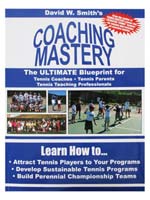
David W. Smith's COACHING MASTERY has been labeled as the most complete tennis instructional book for coaches, tennis parents, and teaching pros that has ever been produced. At nearly 400 pages, (and nearly 350 photographs), the book shows anyone who has wanted to play skilled tennis or coach and teach skilled tennis proven formulas, providing a dynamic "blueprint" on how to create successful individuals and championship teams. This award-winning book culminates David Smith's (and his father the late Bruce Smith's) incredible career as a coach, teaching pro, director, and club owner. With over 75 drills (including 50 from the award-winning Master Pro Ken DeHart!) the book is a must for any tennis enthusiast!
David has taught over 3000 players including many top national and world ranked players. He can be reached at acrpres1@email.msn.com. |
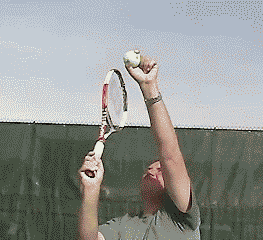
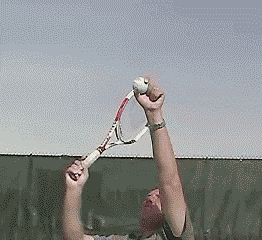
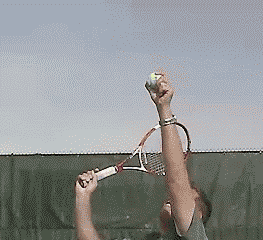
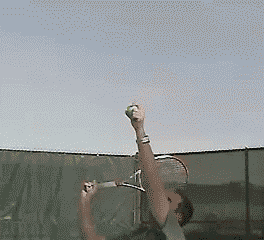
 Your comments are welcome. Let us know what you think about this article by
Your comments are welcome. Let us know what you think about this article by